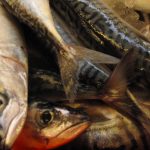The state of a variety of fish stocks in European waters has seen an improvement since 2005 – but it has been slow. While 32 out of 34 assessed fish stocks were overfished in 2005, this year the figure has dropped to 30 out of 35 . Alongside this, the number of fisheries where scientists advise a closure has dropped from 24 to 17 The state of some 57 stocks is unknown due to poor data reporting by the fishing vessels or insufficient surveying. Progress towards bringing all European fish stocks to sustainable levels has however been slow. The fleets have not been able to adapt quickly enough to the scientific advice. Moreover, regrettably, in some cases recent years have seen TACs being set above levels that would be sustainable.
Commenting on the proposal, Fisheries Commissioner Borg said: “We have worked hard to make sure our proposals are sound, workable and sensible. We have consulted the industry sectors and listened to their concerns. I know that many professionals in the fisheries sector are keen to see fish stocks exploited sustainably. This will benefit both the fishing industry and society as a whole.”
This year’s proposal is much shorter than in previous years as temporary technical measures concerning closed seasons, mesh sizes and discard reduction measures have been moved into a separate set of proposals. From now on, the “fishing opportunities” proposals will only contain TACs, quotas and effort levels and measures very closely linked to the uptake of quotas and effort.
Conservation of cod:
The Commission is still very concerned about the conservation of cod. In the case of cod in the North Sea, eastern Channel and Skagerrak, despite attempts to improve cod conservation since 2002, things took a turn for the worse in 2008, when a greater proportion of the stock was caught than in any year since 1999. What is more, there are not enough older, spawning fish and too few young fish coming into the stock since 2005 ).
Real-time closures and cod-avoidance schemes have not been enough to protect the stock and have had little effect on fishing patterns. Bringing about an improvement in this situation will mean stepping up conservation efforts still further and implementing the cod plan adopted last autumn. This will result in lower levels of fishing effort and therefore in less pressure on cod. TACs will be adapted in each area according to the amounts of cod left in the sea.
Increased TACs for few species:
On a more positive note, some stocks which have been under long-term management plans are starting to show the benefits of better, longer-term management approaches. Following last year’s TAC increase of 7%, a further small increase has been possible for North Sea sole. For another stock under a long-term plan – sole in the Bay of Biscay – a 2% increase has been possible. For herring to the west of Scotland, a 12% increase is proposed under the plan.
Reductions of TACs to improve sustainability in many stocks:
The Commission is also proposing many reductions in catches in order to protect the most vulnerable species and to bring the fisheries to sustainable levels:
As was agreed last year, TACs for spurdog (spiny dogfish) have been reduced by 90% and the TACs can only be used for by-catches.
Important reductions in the TACs for haddock West of Scotland, sole in the eastern English Channel and Norway lobster around Ireland have proven necessary.
Reductions of 25% for vulnerable stocks of southern anglerfish, whiting in the Irish Sea and west of Scotland, blue ling, Irish Sea sole, and herring North and West of Ireland have been put forward.
For a further 50 stocks, reductions of 15% or less have been proposed.
These reductions go in the direction of the scientific advice, but have been moderated in order to alleviate hardship for the catching sectors in the short term. The bottom line is that no fish means no fishermen. So while being a difficult pill to swallow, these measures are also necessary if we are to bring stocks to sustainable levels.
This year’s proposal does not include figures for stocks managed jointly with Norway, Iceland, Russia, the Faroe Islands or other third countries, because the parties have not yet reached agreement on those resources.
The Commission remains committed to reducing discards, but fishers also have their part to play and should fish responsibly by returning to port once their quotas are used up, using selective fishing gear and avoiding concentrations of young fish. The Commission has started developing proposals to this end.
Based on the proposal, Member States’ Fisheries Ministers will decide on the levels of TACs for 2010 at their meeting of 14 and 15 December.








